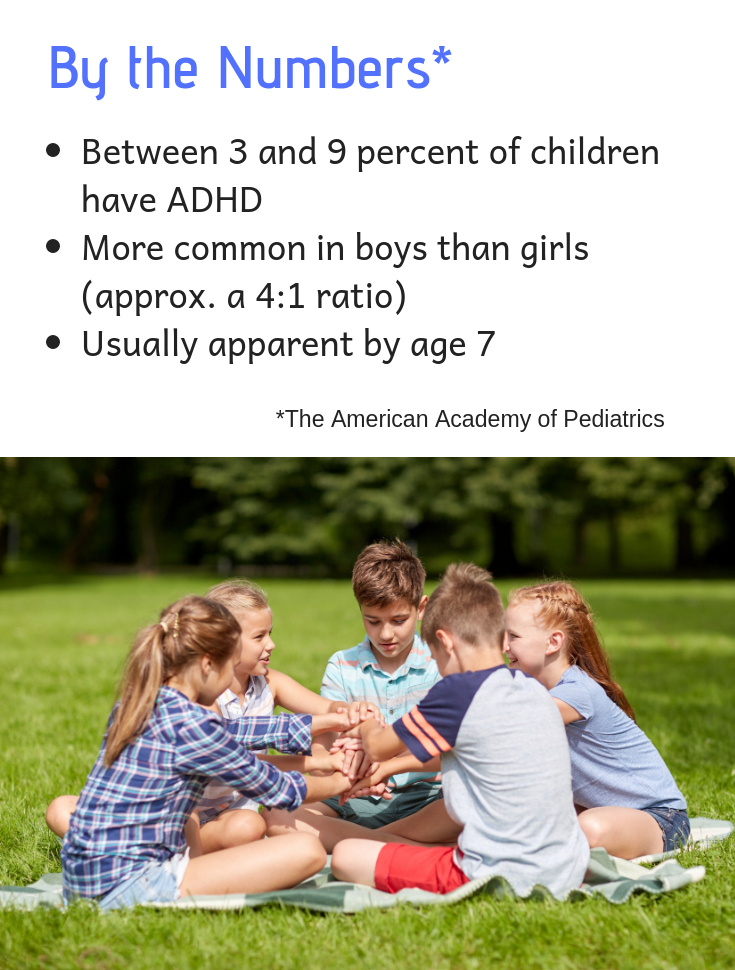It’s ADHD. It’s ADD. “Children are just naturally busy and active.” “It’s a phase, and they’ll grow out of it.”
We hear a lot of acronyms and potential reasons about why children are behaving in a certain way. But what is ADHD? And if you start having concerns, how do you know when it’s time to see a healthcare provider?
Let’s start by defining the difference between Attention-Deficit Hyperactivity Disorder (ADHD) and Attention-Deficit Disorder (ADD).
ADHD is behavior disorder characterized by attention problems and/or hyperactivity and impulsivity.
ADD is a type of ADHD characterized by inattentiveness and dreaminess, not the constant movement and fidgeting of ADHD.
When parents start suspecting ADHD
Typically, parents start to notice potential symptoms around first grade or the age of 7. That’s because this is when many kids are in an all-day school setting for the first time, according to Dr. Ronna Schneider of Suburban Pediatric Associates.
“ADHD is more than just not being able to focus well,” she says. “Children with ADHD appear to be driven by a motor and they literally cannot stop themselves. They often put themselves in dangerous situations.”
 Typical symptoms of ADHD include:
Typical symptoms of ADHD include:
Inattention
- Short attention span for age
- Difficulty listening to others
- Difficulty attending to details
- Easily distracted
- Forgetful
Impulsivity
- Often interrupts others
- Has difficulty waiting for a turn in school or games
- Acts before thinking and often takes risks
- Tends to blurt out answers instead of waiting to be called on
Hyperactivity
- Has difficulty remaining in seat even when it’s expected
- Talks excessively
- Has difficulty engaging in quiet activities
- Unable to stay on task – shifts from one thing to another without finishing anything
If you hear concerns or complaints from two different mentors – such as teachers and coaches – you should schedule an initial consultation with a healthcare provider.
Diagnosis and treatment
At Suburban Pediatrics, the first appointment generally takes about 30 minutes. The provider will ask about behavior and school concerns along with questions that follow the American Academy of Pediatrics (AAP) guidelines. In addition, the provider will score the Vanderbilt Assessment Scales filled out by parents and teachers to achieve a diagnosis.
If your child receives a diagnosis of ADHD, the recommended treatment is medication and behavioral therapy, according to Dr. Schneider.

“We understand that parents can be worried about putting their children on medication. At Suburban Pediatrics, we do our best to maximize efficacy and minimize treatment side effects,” she says. “We’ll figure out what’s sustainable, making dosage adjustments as needed. We’ll work with parents to find a medicine that’s effective and affordable.”
Suburban Pediatrics takes a holistic approach in treating ADHD, helping parents and children be proactive and looking ahead to help manage the condition. For example:
- Finding the best solutions to structure the day
- Helping junior high students figure out their most productive times to start developing effective study habits
- Helping students prepare for college
- Finding jobs that don’t require sitting at a desk
“We know that the prospect or a diagnosis of ADHD can be nerve-wracking and scary for parents,” says Dr. Schneider. “But we tailor a treatment plan that follows evidence-based medicine to always do what’s best for the child.”














